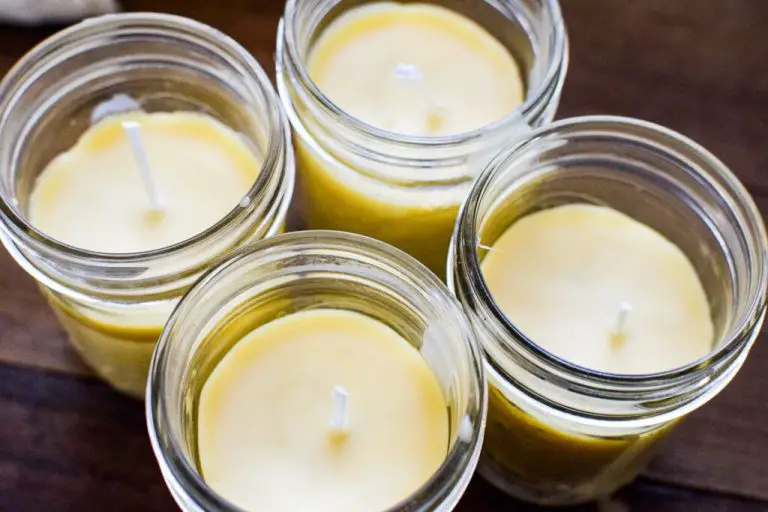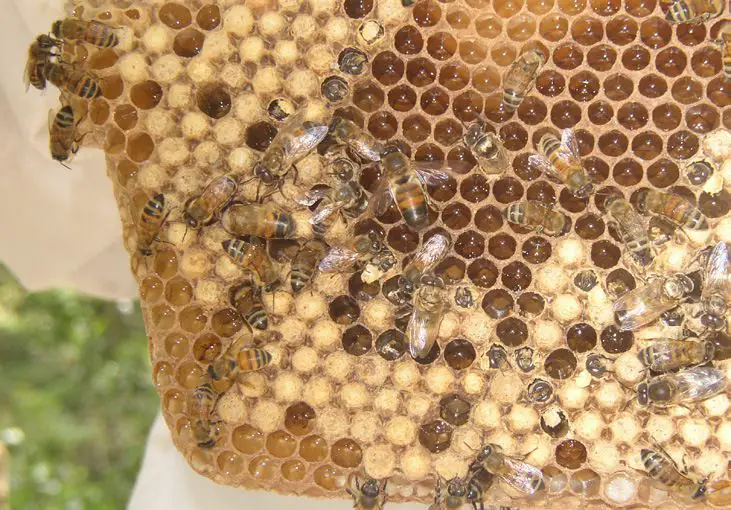Do Paraffin Wax Candles Burn Clean?
Paraffin wax is often used to make candles because it is inexpensive and easy to work with. However, there are concerns that paraffin wax candles may release harmful chemicals and generate more soot than some alternative candle waxes. This article examines whether paraffin wax candles burn cleanly compared to other options.
The thesis of this article is that paraffin wax candles do not burn as cleanly as some alternatives. We will analyze the chemical composition of paraffin wax, look at the byproducts produced when it burns, and compare it to natural waxes like soy, beeswax, and palm wax. Factors like soot production, toxin release, and environmental impact will be considered. The goal is to objectively evaluate the data and evidence on paraffin candle emissions.
What is Paraffin Wax?
Paraffin wax is derived from petroleum. It is created through the distillation of crude oil during the oil refining process1. Chemically, paraffin wax consists of straight-chain alkanes, saturated hydrocarbons made up entirely of hydrogen and carbon atoms2. The hydrocarbons typically range from C20 to C40, indicating 20 to 40 carbon atoms per alkane molecule1. The longer the alkane chains, the higher the melting point of the wax. Paraffin waxes used for candles typically have melting points between 46–68°C.
How Paraffin Candles Burn
Paraffin wax candles burn by capillary action. The candle wick works to draw liquid wax up to the burning tip. As heat from the flame melts the solid wax, the wick soaks up liquid wax via capillary action and the wax vaporizes at the flame. This vaporized wax combines with oxygen to fuel the flame’s continued burning. The melting point of paraffin wax is around 130 to 185°F (54 to 85°C) [1]. When the flame burns the wax vapors, the main byproducts produced are carbon dioxide, water vapor, heat, and light.
The candle wick is a crucial part of how a paraffin candle burns. Wicks are typically made from braided cotton. The wick needs to be thick enough to draw melted wax up to the flame, but thin enough that it burns off completely to avoid smoking. Thicker wicks tend to burn hotter, while thinner wicks produce gentler flames. Adjusting wick thickness allows candle makers to control factors like melt pool depth, burn time, and fragrance throw. An improperly sized wick can result in tunneling, poor scent dispersal, or excessive smoking.
As paraffin wax melts during burning, the melted pool of wax contracts inward, drawing up more solid wax via capillary action in the wick. This capillary action continues until all the wax melts or the flame goes out. The melting point of paraffin wax ensures the wax liquefies at the candle’s burning temperature, allowing for consistent capillary flow. Higher melt point waxes like beeswax require hotter flames and are more prone to wick drowning.
The smoke produced when burning a paraffin candle comes from incomplete combustion. Several factors can lead to excess smoke, including wick thickness, melt pool temperature, drafts, and additives in the wax. Properly formulated paraffin candles burn clean with very little smoking. Excess smoke indicates the flame is unable to fully combust the wax vapors.
Paraffin Burn Byproducts
When paraffin wax candles burn, they produce black soot and harmful air toxins as byproducts. The soot is created from incomplete combustion of the hydrocarbon compounds in paraffin wax. According to a scientific study, paraffin candles emit significantly more soot than soy or beeswax candles (https://pubmed.ncbi.nlm.nih.gov/24318837/).
The toxins released when paraffin burns include acetaldehyde, formaldehyde, acetone, and benzene. A 2021 study measured the emissions from various candle waxes and found concerning levels of formaldehyde from paraffin specifically (https://www.sciencedirect.com/science/article/pii/S0160412021002154). Formaldehyde is classified as a known human carcinogen by the EPA.
The soot and toxins produced when burning a paraffin candle can pollute indoor air. This is a health concern, especially for those with respiratory conditions like asthma. Paraffin soot also creates more cleanup and can stain walls or furniture.
Health Concerns
Burning paraffin wax candles can release concerning compounds into the air that may pose health risks. According to research, paraffin wax candles produce more soot than other wax options like soy or beeswax.1 This soot contains polycyclic aromatic hydrocarbons (PAHs), which are known carcinogens.2 Inhaling the soot over time may irritate the lungs and airways, potentially increasing the risk of respiratory issues like asthma.3
Burning paraffin also releases volatile organic compounds (VOCs) like acetone, benzene, toluene, and formaldehyde into the air.2 These VOCs are associated with increased cancer risk when inhaled regularly.1 Formaldehyde in particular is classified as a known human carcinogen by the EPA and WHO.2
While more research is still needed, these potential toxins released when burning paraffin candles raise concerns over respiratory issues and increased cancer risk with regular exposure.
Environmental Impact
Most paraffin wax is derived from petroleum, which is a non-renewable fossil fuel. The process of extracting and refining crude oil to make paraffin wax contributes to climate change and environmental pollution (https://impactful.ninja/candles-environmental-impact/). When burned, paraffin wax candles release emissions including fine particulate matter, polycyclic aromatic hydrocarbons, and volatile organic compounds into the air (https://www.ncbi.nlm.nih.gov/pmc/articles/PMC4552239/). These emissions can have negative effects on respiratory health.
Additionally, crude oil spills associated with the petroleum industry can be environmentally devastating. For example, pipeline spills and accidents have caused harm to wildlife habitats and contaminated water sources (https://www.biologicaldiversity.org/campaigns/offshore_drilling/). The extraction process also requires large amounts of energy and water resources.
Since paraffin wax comes from a non-renewable resource, it is not considered a sustainable option. There are concerns that as oil supplies diminish, the availability and affordability of paraffin wax could be impacted. Some consumers who are ethically opposed to using fossil fuel-derived products may want to avoid paraffin for environmental reasons.
Alternative Wax Options
There are several alternative wax options for candle making besides paraffin wax. Some of the most popular include:
Beeswax – Beeswax is a natural wax made by honey bees. It has a sweet, honey-like scent when burned. Beeswax candles burn cleaner than paraffin with less soot. However, beeswax is more expensive and burns at a lower temperature, resulting in a shorter burn time. Beeswax comes from ethical, sustainable beekeeping practices. (Source: https://www.candlestock.com/collections/alternative-wax-candles)
Soy wax – Soy wax is made from hydrogenated soybean oil. It’s a renewable and biodegradable resource. Soy wax burns clean, though not as clean as beeswax. It has no petroleum compounds and does not release carcinogens when burned. The burn time is comparable to paraffin. Soy wax candles need to be kept out of high temperatures to avoid melting or losing fragrance. (Source: https://nuthousecandleco.com/blogs/soy-wax-why-we-use-it/candle-making-soy-wax-alternatives)
Palm wax – Palm wax comes from palm trees and is hard, opaque, and crystalline. It creates candles with excellent burn quality and scent throw. Palm wax is also biodegradable and renewable. However, there are environmental concerns with palm oil production leading to deforestation for some sources. (Source: https://nuthousecandleco.com/blogs/soy-wax-why-we-use-it/candle-making-soy-wax-alternatives)
Comparing Burn Quality
When looking at burn quality, two key factors to consider are smoke and scent throw. Paraffin wax tends to produce more soot and smoke compared to natural waxes like soy, coconut, and beeswax according to sources like Creative Candles. The petroleum-based nature of paraffin wax means it does not burn as cleanly. Natural waxes with a higher oil content create less smoke.
In terms of scent throw, paraffin can hold fragrances well, but natural waxes like soy and coconut tend to have better scent throw. Beeswax has poor scent throw unless mixed with another wax. According to Suffolk Candles, soy wax in particular is known for its excellent scent throw capabilities.
So while paraffin candles may burn reasonably well, natural wax options like soy tend to burn cleaner and release more aroma. This makes them preferable in terms of burn quality.
Other Factors to Consider
When selecting a wax for candle making, there are a few other important factors to consider beyond just the type of wax:
Price
The price per pound of wax can vary greatly depending on the type. Paraffin is generally the most affordable option. Beeswax tends to be the most expensive due to the labor-intensive harvesting and cleaning process. Soy wax falls somewhere in the middle price-wise.
Availability
Paraffin wax is widely available and easy to find from online retailers. Beeswax can be harder to source depending on your location. Soy wax is becoming more readily available as its popularity increases.
Performance
Each wax type differs in qualities like melting point, fragrance throw, and how smoothly it releases from molds. Testing different waxes with your particular application will determine what performs best. Paraffin’s high melting temperature makes it ideal for pillars and jars. Soy and beeswax are often preferred for container candles.
Conclusion
In summary, paraffin wax candles are made from a petroleum byproduct that can release concerning toxins like benzene and toluene when burned. While more research is needed, these substances have been linked to health issues and should be avoided when possible.

The soot released from paraffin candles can also dirty your home and the emissions aren’t eco-friendly. For these reasons, it’s recommended to switch to cleaner burning natural wax candles made from soy, beeswax, or other alternatives.
When shopping for candles, look for ones made from natural waxes, with cotton wicks, and fragranced with essential oils. Burn candles in well-ventilated areas and trim wicks to 1⁄4” before lighting to reduce smoke. Consider lighting candles for shorter durations or using them only occasionally. With some awareness and smart choices, you can enjoy candles while minimizing potential risks.





